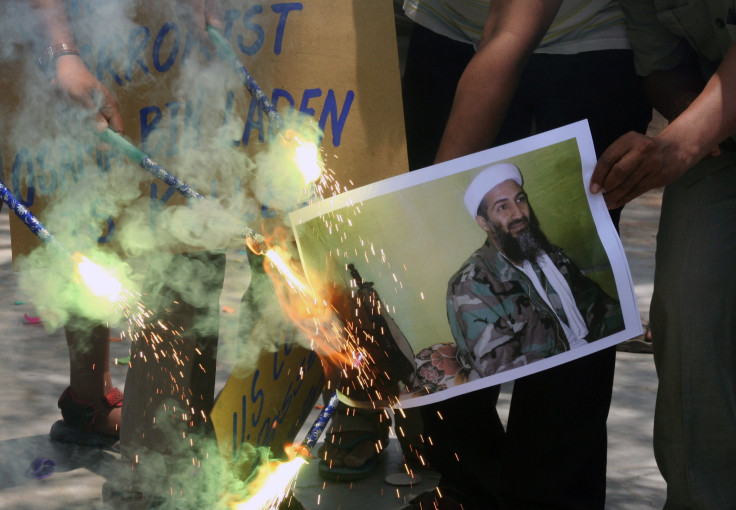Osama Bin Laden Death Report: 5 Ways Seymour Hersh Account Differs From Official CIA Assassination Story

The official White House account of the assassination of Osama bin Laden was a harrowing tale culminating in an all-out firefight at the al Qaeda leader’s secret Pakistan hideout, but a new report by journalist Seymour Hersh tells a different story of what happened that night in May 2011 in Abbottabad -- including that it was all elaborately staged. Hersh’s piece takes aim at the Obama administration, arguing the president lied about the raid that became the plot of the Oscar-nominated film “Zero Dark Thirty” to better his chances of being re-elected, and that the White House inflated the al Qaeda threat to sell its bin Laden story to the public.
The controversial, 10,000-word report, published Sunday in the London Review of Books, claimed that President Barack Obama misled the American people about everything from how U.S. intelligence located bin Laden to where his body was buried so that the administration could take credit for killing America’s most wanted terrorist.
The White House has called the report “baseless.” However, Hersh -- a Pulitzer Prize-winning investigative journalist -- has maintained his account blows the top off a U.S.-Pakistan conspiracy to organize bin Laden’s death.
Hersh’s version of the raid, which he had apparently been working on for years, is hardly perfect. He cites just a handful of sources, many of whom are unnamed. He provides no supporting documents or material proof.
Despite its shortcomings, the report has stirred controversy and put a spotlight on one of the most revered moments in America’s history. Here are five ways Hersh’s account differs from the official story.
1. The U.S. paid a former senior Pakistani intelligence officer $25 million for bin Laden’s whereabouts. Contrary to the Central Intelligence Agency’s claim that locating bin Laden involved years of advanced tracking and intense interrogations, Hersh said the U.S. located bin Laden because of a walk-in tipster. The alleged informant, a former Pakistani intelligence officer, went to the American Embassy in Islamabad and offered officials information about bin Laden in exchange for the reward.
2. Bin Laden was not at large and was actually a prisoner of the Pakistani military. Hersh wrote that Pakistan was being paid by Saudi Arabia to keep bin Laden under house arrest. Saudi Arabia apparently wanted Pakistan to keep bin Laden away from American intelligence for fear that his capture could implicate Saudi Arabia as an al Qaeda ally.
3. Pakistan played a huge role in the assassination. At the time of the raid, it was widely reported that Pakistan only knew about the U.S. plot to kill bin Laden at the very last minute. According to Hersh, once the CIA knew of bin Laden’s location from the walk-in tipster, they worked closely with Pakistan to orchestrate the attack on bin Laden’s compound. Pakistan apparently wanted the assassination to look like it was a surprise American raid.
4. The story of the dramatic raid on bin Laden’s compound was fabricated. The White House’s story of the raid was one made for Hollywood: Under the cloak of darkness, a U.S. Navy SEAL team swooped in on bin Laden’s compound. They stormed the home; a firefight ensued, and bin Laden’s reign of terror was ended.
According to Hersh, most of that never happened. For one, he argued, there was no firefight. The only shots fired were those that hit bin Laden.
The reason for spinning an elaborate tale of heroics, Hersh claimed, was purely theatrical. “SEALs cannot live with the fact that they killed bin Laden totally unopposed, and so there has to be an account of their courage in the face of danger,” an unnamed source identified as a “retired senior intelligence official,” told Hersh. “The guys are going to sit around the bar and say it was an easy day? That’s not going to happen.”
5. Bin Laden was never buried at sea. His body was so torn apart by bullets that Navy SEALs tossed some of his body parts out of the helicopter as they passed over the Hindu Kush mountains on their way back to Afghanistan. “Once the cover story was blown, and the death was made public, the White House had a serious ‘Where’s the body?’ problem,” Hersh’s source told him. “It would be Navy officers who came up with the ‘burial at sea’ idea. Perfect. No body.”
© Copyright IBTimes 2024. All rights reserved.






















